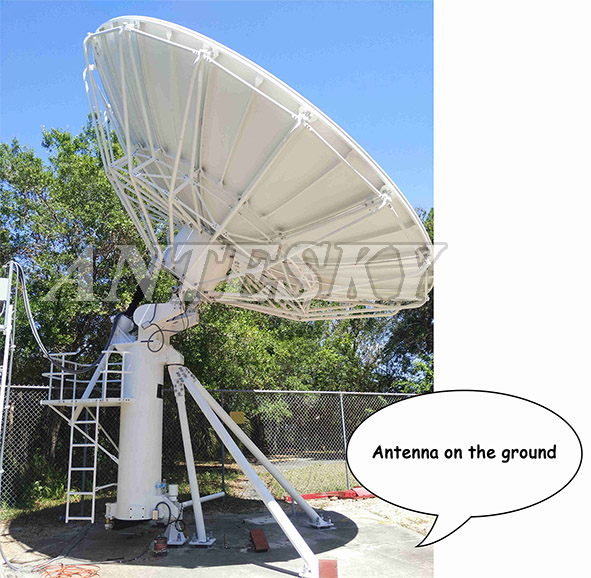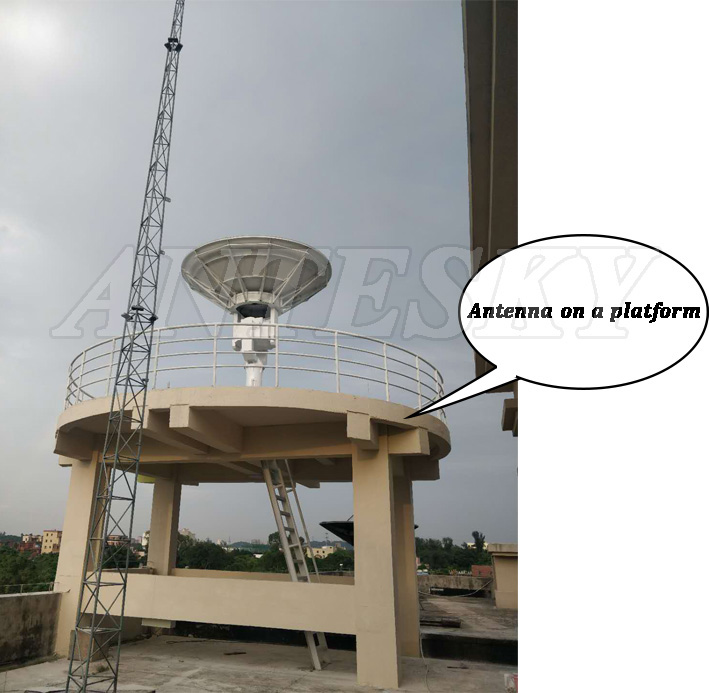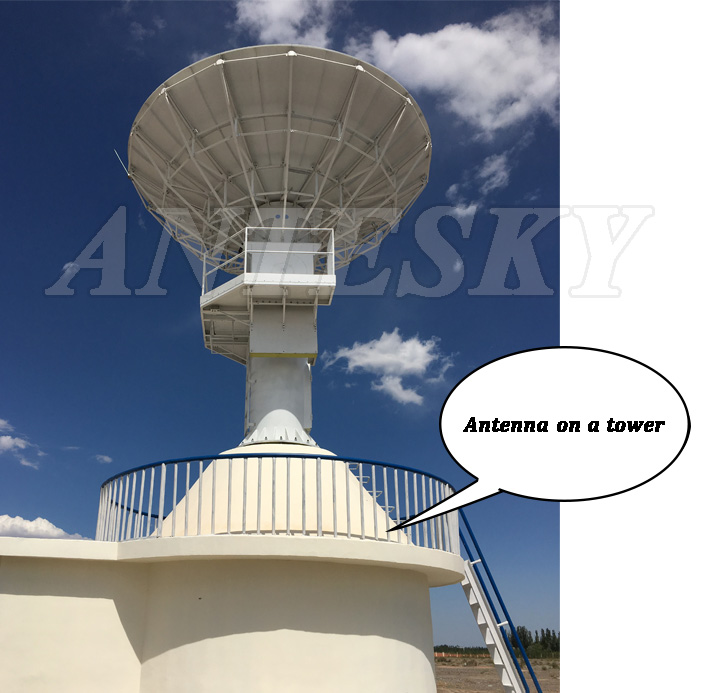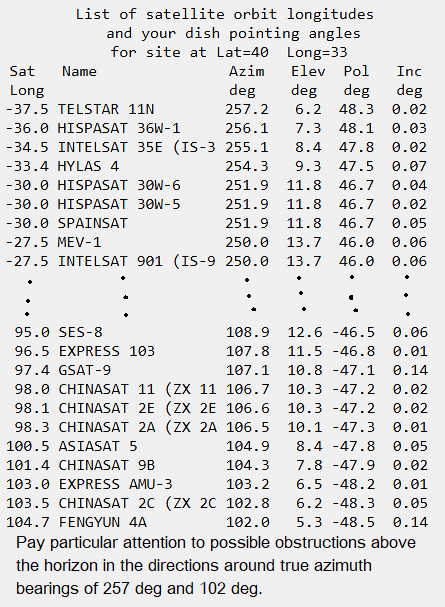Post by Antesky Vicky on May 15th, 2025 at 8:25am
I believe that everyone often sees various satellite antennas in daily life, but have you noticed that some antennas are installed on the ground, some are installed on high platforms, and some have a “small room” under the antenna. Have you ever wondered why the antenna should be installed in this way, and what kind of environmental conditions are suitable for these installation methods? Today, this article will answer your questions. We will introduce 3 different installation methods and compare them in detail, and finally summarize their respective environmental requirements. Please go ahead to learn more details from below.
The satellite antenna can be installed in different locations based on specific installation requirements and environmental conditions. Generally, the satellite antenna can be installed in the following locations: on the ground, on a platform, on a tower. When designing a new satellite antenna station, the first thing to do is to determine the installation site. It directly determines the quality of transmitting and receiving satellite signals, the amount of capital investment, and many practical issues such as installation, operation, maintenance, and security. Business personnel should consider geographical factors, ground electromagnetic environment, meteorological conditions, safety factors, etc. according to actual application requirements, and make the operation of the receiving station more convenient and the operation and maintenance more efficient while ensuring the stable operation of communication services.
1. Three antenna installationmethods introductions
On the Ground: If the site is flat and free from significant obstacles, the antenna can be installed directly on the ground. Typically, supporting structures are needed to ensure the stability and proper angle of the antenna.
Antesky 6.2m Tx/Rx. antenna in USA
On a Platform: If a higher position is required or if there is limited ground space, the antenna can be installed on a platform. The platform can be a specially designed mount to ensure the antenna operates without obstructions.
Antesky antenna on platform
On a Tower Base: For antennas that need greater height to ensure the signal is not interfered with, they can be installed on a tower base. A tower base provides sufficient height and avoids interference from nearby buildings and obstacles.
Antesky antenna on tower
When choosing the installation location, the main factors to consider are signal transmission effectiveness, site conditions, and stability.
2. Antenna installationsites requirements
Different installation methods suit different geographical environments and operational needs.
Ground installationis suitable for open areas like deserts or plains.
Platform installationis ideal for rooftops or areas with complex terrain.
Tower base installationis best for maximizing visibility in mountainous regions or urban environments with high-rise buildings.
The satellite antenna can be installed in different locations based on specific installation requirements and environmental conditions. Generally, the satellite antenna can be installed in the following locations: on the ground, on a platform, on a tower. When designing a new satellite antenna station, the first thing to do is to determine the installation site. It directly determines the quality of transmitting and receiving satellite signals, the amount of capital investment, and many practical issues such as installation, operation, maintenance, and security. Business personnel should consider geographical factors, ground electromagnetic environment, meteorological conditions, safety factors, etc. according to actual application requirements, and make the operation of the receiving station more convenient and the operation and maintenance more efficient while ensuring the stable operation of communication services.
1. Three antenna installationmethods introductions
On the Ground: If the site is flat and free from significant obstacles, the antenna can be installed directly on the ground. Typically, supporting structures are needed to ensure the stability and proper angle of the antenna.
Antesky 6.2m Tx/Rx. antenna in USA
On a Platform: If a higher position is required or if there is limited ground space, the antenna can be installed on a platform. The platform can be a specially designed mount to ensure the antenna operates without obstructions.
Antesky antenna on platform
On a Tower Base: For antennas that need greater height to ensure the signal is not interfered with, they can be installed on a tower base. A tower base provides sufficient height and avoids interference from nearby buildings and obstacles.
Antesky antenna on tower
When choosing the installation location, the main factors to consider are signal transmission effectiveness, site conditions, and stability.
2. Antenna installationsites requirements
Different installation methods suit different geographical environments and operational needs.
Ground installationis suitable for open areas like deserts or plains.
Platform installationis ideal for rooftops or areas with complex terrain.
Tower base installationis best for maximizing visibility in mountainous regions or urban environments with high-rise buildings.



